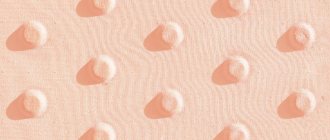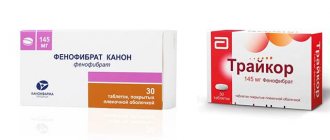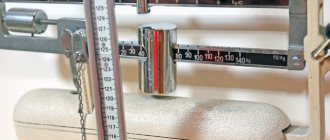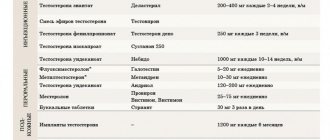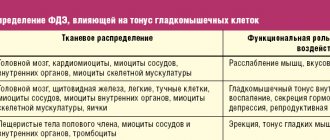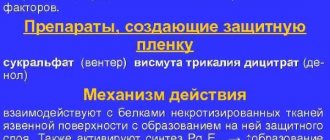Flu and other infectious respiratory diseases can hardly be considered a rarity, especially when it comes to the cold season. And it is during periods of epidemics that drugs containing pentanedioic acid imidazolylethanamide are widely used for prevention and treatment in modern medical practice.
Of course, many people are interested in additional information about such a medicine. How does the drug affect the body? In what cases is it advisable to take pentanedioic acid imidazolylethanamide? Trade name, pharmacodynamics, rules of administration, indications and contraindications are important information. They are worth studying before starting therapy.
Pentanedioic acid imidazolylethanamide: trade name, release form
This remedy is widely used in modern medical practice. Dicarbamine was the first drug to appear on the market, the active component of which was pentanedioic acid imidazolylethanamide. The medicine (available in tablet form) is still used today, although in oncological practice, to stimulate hematopoietic processes.
In 2009, a new product appeared on the pharmacological market - Vitaglutam. This drug began to be used to treat various viral diseases, in particular swine flu. This drug is available in powder form.
"Ingavirin" is another drug that contains pentanedioic acid imidazolylethanamide. Release form: capsules with special markings. It contains white powder inside. For greater convenience, the capsules are available in various colors.
- You can buy blue capsules at the pharmacy - each of them contains 30 mg of the active ingredient (this dosage is suitable for children).
- The yellow color indicates that each capsule contains 60 mg of pentadioic acid imidazolylethanamide.
- Red capsules contain 90 mg of active substance.
All capsules are packaged in convenient blisters of 7 pieces. At the pharmacy you can purchase a package containing 1 or 2 such blisters. In addition, capsules can be packaged in glass jars, but this form of packaging is suitable for hospitals - a large amount of medicine is purchased for treatment in a hospital setting.
By the way, Ingavirin capsules also contain auxiliary components, in particular, magnesium stearate, lactose, silicon dioxide, starch, titanium dioxide, propylene glycol and corresponding dyes.
Efficiency[ | ]
Research on the drug Ingavirin[ | ]
In 2016, it was noted that for Ingavirin there is one clinical study of level of evidence B and seven clinical studies of level of evidence C[10].
Preliminary studies[ | ]
In vitro[ | ]
| This section is excessively long or contains unimportant details. If you do not agree with this, please show in the text the materiality of the material presented. Otherwise, the section may be deleted. Details may be on the talk page. |
In a 2009 study on cell cultures of dogs and chicken embryos, ingavirin at dosages of 200-300 mg/ml revealed activity in suppressing the reproduction of H1N1 influenza viruses from 34 to 44% on different strains of 2009[33].
In experiments with the H1N1 influenza virus, Ingavirin reduced the cytopathogenic effect caused by the virus in cell culture by 50−79% [38].
in 2009, an article was published on the study of the antiviral activity of Ingavirin against the influenza A (H3N2) pathogen in vitro [39], which compared the in vitro antiviral activity of Arbidol, Ingavirin and Remantadine [ significance of the fact?
]. The scientists concluded that “Ingavirin effectively suppresses the cytopathic activity of the virus, the formation of specific hemagglutinin and the reproduction of the virus by accumulation.”
On animals[ | ]
| This section is excessively long or contains unimportant details. If you do not agree with this, please show in the text the materiality of the material presented. Otherwise, the section may be deleted. Details may be on the talk page. |
The article by Ushkalova E. “Leaders in sales of over-the-counter drugs and problems of their safety,” published in 2014, indicates that when comparing effectiveness in mice, Ingavirin showed an antiviral effect with less effectiveness against influenza pneumonia than Arbidol and rimantadine, based on which the authors studies concluded that there is no direct virus-specific effect of Ingavirin and suggested that its effectiveness is due to “other pharmacological properties”[7].
In a study conducted jointly by the branch of the Federal State Institution “48 Central Research Institute of the Ministry of Defense of the Russian Federation” and LLC “Valenta Pharmaceuticals” (published in 2008), the survival rate of mice treated with Ingavirin was less than that of those treated with Rimantadine and Tamiflu, and greater than that of those treated with Arbidol[ 40]. The inhibitory effect on the production of hemagglutinin by the virus is the same as that of Arbidol and significantly lower than that of Tamiflu and Rimantadine (66% versus 91−100%)[41]. However, the annotation to the article says: “effectively protects animals from death, and also suppresses the formation of specific hemagglutinin”[42].
A group of Russian scientists from the Research Institute of Influenza, with the participation of employees of Valenta Pharmaceuticals, published a direct comparison of ingavirin, Tamiflu and ribavirin in mice, which showed that ingavirin is inferior in the same doses to comparison drugs in protecting animals sensitive to the influenza virus, while it is significantly less toxic than Tamiflu and ribavirin[43].
In a study on mice, the protective effect of Ingavirin during infection with the influenza A(H1N1)2009 virus, its effectiveness was significantly lower than that of Oseltamivir: the protective index was 18−67% and 72−81%, respectively. The maximum protective effect was at doses of Ingavirin 30 mg/kg body weight in the first 2 days and 15 mg/kg in subsequent days after infection [44].
In mice, the effect of Ingavirin on parainfluenza virus is significantly lower than that of ribavirin [45].
Clinical trials and generalization studies[ | ]
There are no articles in reviews of the Cochrane Library for Medical Research confirming the effectiveness of Ingavirin. PubMEd finds 59 articles and studies testing the drug for various diseases. It is also not on the list of drugs recommended by the World Health Organization[31].
Russian clinical studies were carried out by the same team, and, according to V.N. Shishkova, expressed in 2016, their quality is questionable[6]. The drug and its active ingredient have not been studied in foreign studies for a long time. In the summer of 2022, an article by Czech scientists was published, which suggested the possibility of using Ingavirin in the treatment of coronavirus[46].
In a clinical study in 2008, the effectiveness of Ingavirin was tested in patients with uncomplicated influenza when used from the first 36 hours of the disease in comparison with Arbidol and placebo in parallel with symptomatic therapy. Ingavirin turned out to be better than Arbidol in reducing symptoms; patients subjectively noted a better effect from treatment with it. Instrumental methods in this study were used only to select patients (laboratory confirmed uncomplicated influenza, absence of chronic diseases) and to determine the level of interferons. The procedures for taking Arbidol and Ingavirin were different: Arbidol was taken 4 times a day, Ingavirin - once [47]. /ref>.
Pentanedioic acid imidazolylethanamide: mechanism of action
This substance has pronounced antiviral properties. The drug is especially active against common forms of influenza.
Pentanedioic acid imidazolylethanamide prevents the movement of the synthesized genetic material of the virus from the cytoplasm to the nucleus, which, accordingly, inhibits the process of reproduction of the pathogen and its spread throughout the tissues of the human body.
Studies have also shown that the substance affects the activity of the interferon system. During therapy, you can observe an increase in the level of interferon in the blood (to physiological norms). In addition, this medicine increases the activity of leukocytes, in particular, their alpha-interferon-producing ability. Against the background of the disease, an increase in the level of alpha, beta and gamma interferons is observed in neutrophils, T-lymphocytes, as well as intestinal epithelial cells and liver hepatocytes. In this case, hyperinterferonemia is not observed.
In addition, pentanedioic acid imidazolylethanamide provides an increase in the number and activity of lymphocytes. The drug also stimulates the production of NK-T cells, which have pronounced activity against cells that have already been transformed by the virus. The drug also affects red bone marrow stem cells.
This remedy also has some anti-inflammatory properties. Pentadiovy acid imidazolylethanamide inhibits the synthesis of inflammatory mediators.
Thus, this substance slows down the proliferation of viruses, stimulates the activity of the human immune system, reduces the intensity of symptoms of a viral disease, fights fever, catarrhal symptoms and other symptoms of the disease. In addition, the use of the medicine significantly reduces the likelihood of developing complications of influenza (including swine flu).
Pentanedioic acid imidazolylethanamide is quickly absorbed by the wall of the digestive tract, after which it is distributed throughout the body. The maximum concentration of the substance in tissues can be observed 30 minutes after administration. The medicine is not metabolized and is excreted unchanged from the body over the next 24 hours. More than 70% of the substance is excreted together with feces, and the rest through the urinary system.
By the way, the drug is rightfully considered safe. During clinical trials, it was confirmed that this substance does not have carcinogenic and/or mutagenic properties, even when taking high doses of the drug. This remedy does not in any way affect the functioning of the reproductive system (in particular, the processes of fertilization). The drug also does not affect the body of the growing fetus (if the drug is taken by a pregnant woman).
History[ | ]
Representatives of the manufacturer claim that the idea of creating the drug appeared in the early 1980s[17].
According to Academician of the Russian Academy of Sciences A.G. Chuchalin, corresponding member of the USSR Academy of Sciences R.P. Evstigneev in the 1960s. worked to create an effective drug for the treatment of allergies and for this purpose studied the poison of the Californian mollusk[15][24]. Based on this work, a group of her students, including V. E. Nebolsin, synthesized a new low-molecular drug with a powerful antihistamine effect, now known as ingavirin. Later it turned out that the drug acts on interferon receptors, the insufficient functioning of which is a prerequisite for the development of both allergic and viral diseases. During the SARS epidemic, A.G. Chuchalin proposed testing ingavirin against coronavirus and found that the drug worked against SARS[24]. Chuchalin’s story was heard in interviews with many media outlets, but it raises doubts about its reliability due to the fact that the Soviet chemist Evstigneeva at the height of the Cold War could hardly work with a mollusk endemic to the sea shelf near Los Angeles, which Chuchalin himself admitted[ 15].
A.G. Chuchalin himself participated in the development of ingavirin[17][12], and may be the main author of the drug[5].
The active substance of ingavirin (vitaglutam) was sold in Russia until 2008 under the brand name “Dicarbamin” as a stimulator of hematopoiesis in patients receiving anticancer therapy[17][5].
According to information published in an investigation by Ivan Golunov in Republic magazine in 2013, in 2009 A.G. Chuchalin claimed that Ingavirin was created in a closed laboratory near Moscow, which was once involved in the development of bacteriological weapons and that a drug equal to it in terms of potency for the influenza virus, no and will not be for a long time throughout the world[25]
In 2009, A.G. Chuchalin personally launched a business project to introduce Ingavirin into Russian medicine, and since then he has been promoting it thanks to his authority as a disinterested scientist from the heyday of the USSR[15]. According to information published in an investigation by Ivan Golunov in Republic magazine in 2013, in the same year the academician proposed Ingavirin to the chief sanitary doctor of Russia Gennady Onishchenko to combat swine flu, and Onishchenko facilitated its accelerated clinical trials and registration. A few months after the start of sales, Ingavirin was recommended by the Ministry of Health for the treatment of swine flu[5].
However, the drug was registered back in 2008[26]. And in the same year, a study was published on the effectiveness and safety of Ingavirin in the treatment of patients with influenza, including A(H1N1). The study involved only 105 patients: 33 of them received Ingavirin, 39 received placebo, and 33 received Arbidol[27].
In 2010, at the 23rd ICAR conference in San Francisco (USA)[28], the protective activity of Ingavirin against influenza A viruses was discussed[29].
At a meeting of the WHO International Working Group for Drug Statistics Methodology in October 2022, a decision was made to assign the drug Ingavirin a ATX J05AX21 “Other antivirals” [30] .
In the winter months of 2016, Ingavirin was the top-selling drug according to the DSM Group[31].
In January 2022, a television advertisement called Ingavirin a cure for coronavirus, but a short time later this phrase was removed from the advertisement[15].
In 2022, Chuchalin actively recommended Ingavirin for the treatment of COVID-19. After facing criticism and being forced for unclear reasons to resign as chairman of the Ethics Council of the Russian Ministry of Health, he continued to cautiously promote it for the treatment of this disease[15].
Among the antiviral drugs in the pharmacy range, Ingavirin was the best-selling in the first 10 weeks of 2022 with a share of 23.3%[32].
In 2022, 74 government contracts were concluded in Russia for the supply of Ingavirin with a total amount of more than 201 million rubles[15].
According to the DSM-group, in 2022 the drug took fourth place in terms of the amount of profit received by the manufacturer among all drugs on the Russian pharmaceutical market[15].
When should you take medications? Main indications
You already know how pentanedioic acid imidazolylethanamide affects the human body. Indications for use are another important point that must be studied.
Such drugs are widely used to treat respiratory viral infections. Pentadioic acid imidazolylethanamide is most effective against influenza A and B viruses. In addition, the substance is used for infection with adenoviruses, parainfluenza and some other pathogenic microorganisms.
It is worth noting that the medicine is widely used not only for treatment, but also for the prevention of viral diseases. Clinical trials have shown that timely use of such antiviral drugs helps to significantly reduce the risk of developing the disease during a seasonal epidemic.
Separately, it is worth mentioning the drug “Dicarbamin”. It is believed that this drug has a hematoprotective effect, reducing the intensity of side effects from chemotherapy. This drug is widely used in oncological practice. It is prescribed to patients with malignant tumors during breaks between chemotherapy courses. The medicine helps alleviate the patient's condition.
Notes[ | ]
- ↑ 1 2
Information letter of the Federal Service for Surveillance in Healthcare and Social Development dated May 12, 2010 No. 04I-439/10 “On the results of the examination of the quality of medicines during preliminary state control for April 2010.”
(Russian). Guarantor
. - ↑ 1 2
Vitaglutam (Pentanedioic acid imidazolylethanamide) (Russian).
Guarantor
. - Zarubaev et al., 2011, p. 1520.
- RU No. LSR-000017.
- ↑ 1234567
Golunov, 2013. - ↑ 123456789
Shishkova, 2016. - ↑ 123
Ushkalova and Chukhareva, 2014. - ↑ 1 2
Influenza is a medical, social and epidemiological problem,
Doctors about medications
, Remedium (April 2, 2015). Archived from the original on April 13, 2015. Retrieved April 9, 2015. - Aschaher et al., 2016.
- ↑ 12
Meeting of the Higher School of Therapy of the Moscow City Scientific Society of Therapists on February 1, 2016 / Chairman: Professor A. A. Zaitsev Secretary: A. B. Zykova // Moscow Doctor, Internet version. - ↑ 123456
Dicarbamine - instructions for use, 2008. - ↑ 1 2 3 Karen Shainyan.
Why you shouldn't treat a cold.
Immunostimulants as a Russian sociocultural phenomenon (Russian). Radio Liberty
(December 5, 2012). Access date: June 15, 2022. Archived October 20, 2016. - Letter No. 20-3/2036504 dated 05/12/2014.
- ↑ 12
RU No. LSR-006330/08. - ↑ 1 2 3 4 5 6 7 8 9 Senkin, S.
Marketing or Death. Who is promoting the dubious “Ingavirin” on the Russian market during the coronavirus // Life. — 2022. — November 9. - RU No. LSR-003762/08.
- ↑ 1234
Reuters, 2010. - https://pubmed.ncbi.nlm.nih.gov/26881717/
- Options and prospects for repurposing drugs for use in cancer therapy
- Ingavirin® (Ingavirin), instructions, method of use and dosage, reviews of the drug, capsules, 30 mg, 60 mg, syrup, 30 mg/5 ml - Encyclopedia of RLS drugs (unspecified)
.
www.rlsnet.ru
. Access date: April 15, 2022. - Dicarbamin® (Dicarbamin) instructions for use (unspecified)
. - Ustinov, 2010.
- Federal Law of April 12, 2010 N 61-FZ “On the circulation of medicines” // Russian newspaper. - 2010. - No. 5157 (78) (April 14).: “6. State registration is not allowed: ... 2) one medicinal product produced by the manufacturer under different trade names and submitted for state registration in the form of two or more medicinal products"
- ↑ 1 2 Leskova, N.
Without ethics there is no normal medicine: Head of the Ethics Council under the Ministry of Health of the Russian Federation, Academician Alexander Chuchalin - about medical ethics and controversial issues that they are trying to resolve with its help: [arch. September 23, 2016] // In the world of science: journal.. - 2015. - No. 12. - pp. 4–9. - [Follow the link - online version of the article, published January 10, 2016]. — ISSN 0208-0621. - Nadzharov, Alexander.
Hack the genome: Russian scientists have created a unique drug against the A/H1N1 virus: [interview with A.G. Chuchalin]: [arch. December 27, 2013] // Ogonyok: journal. - 2009. - No. 2 (May 25). — P. 6. - State register of medicines (unspecified)
.
grls.rosminzdrav.ru
. Access date: June 30, 2022. - Publication for practicing doctors “Russian Medical Journal”.
Study of the effectiveness and safety of the new antiviral drug Ingavirin® in the treatment of patients with influenza
(unspecified)
.
www.rmj.ru.
_ Access date: June 30, 2022. - ISAR Conference and Program Committees.
Invitation to the Twenty-Third International Conference on Antiviral Research, San Francisco, USA, 25–28th April, 2010: [English] // Antiviral Research: J. - 2009. - Vol. 82, no. 2 (4 May). - P. A82. - doi:10.1016/j.antiviral.2009.02.005. - Mason, Vicki L.
International society for antiviral research - 23rd international conference: [English] // IDrugs: the investigational drugs journal. - 2010. - Vol. 13, no. 6 (1 June). — P. 363–365. — ISSN 2040-3410. - PMID 20506054. - WHOCC - ATC/DDD Index (undefined)
.
www.whocc.no
. Date accessed: May 11, 2022. - ↑ 12
Mishchenko, 2022. - Ingavirin leads in sales of antiviral drugs in 2020: [arch. February 19, 2021] / analytical // AlphaRM. — 2020. — March 17.
- ↑ 1 2 Lvov, D.K.
Table. 2. Study of the sensitivity of influenza A(H1N1) viruses, similar to swine, to chemotherapy drugs with specific activity. — B: Isolation on May 24, 2009 and depositing in the State Collection of Viruses (GKV No. 2452 dated May 24, 2009) of the first strain A/IIV-Moscow/01/2009(H1N1)swl, similar to the swine virus A(H1N1) from the first identified on May 21. 2009 patient in Moscow / D.K. Lvov, E.I. Burtseva, A.G. Prilipov... [etc.] // Questions of Virology: journal. - 2009. - T. 54, No. 5. - P. 10−14. — ISSN 0507-4088. - ↑ 123456
Ingavirin - instructions for use, 2022. - The effect of the drug Ingavirin® (pentanedioic acid imidazolylethanamide) on the interferon status of cells under conditions of viral infection (undefined)
.
cyberleninka.ru
. Access date: April 18, 2022. - N.P. Semenova, E.N.
Prokudina, D.K. Lvov, V.E. Not much. The influence of the antiviral drug Ingavirin on intracellular transformations and import into the nucleus of the nucleocapsid protein of the influenza A virus. - Questions of Virology No. 5 2010, 2010. - P. 17-20. - Study of the therapeutic effectiveness of the new domestic drug Ingavirin® against the causative agent of influenza A (H3N2)
- Zarubaev et al., 2011, p. 1520: “In experiments with IAV H1N1 Ingavirin the virus-induced cytopathogenic effect in cell culture decreased 50 to 79% compared to control cells.”
- Loginova S. Ya., Borisevich S. V., Semenova I. V., Maksimov V. A., Bondarev V. P., Nebolsin V. E. Study of the antiviral activity of Ingavirin against the influenza A (H3N2) pathogen in vitro. Antibiotics and chemotherapy. 2009;54(9-10):23-26.
- Loginova et al., 2008, Table. 1. “Results of assessing the preventive effectiveness of the drug Ingavirin® against experimental influenza infection in white mice intranasally infected with the influenza virus.”
- Loginova et al., 2008, Table. 3. “Results of studying the dynamics and level of suppression of the formation of specific viral hemagglutinin in the lungs of white mice intranasally infected with influenza virus, strain A/Aichi/2/68 (n=3).”
- Loginova et al., 2008.
- Zarubaev et al., 2011.
- Zarubaev et al., 2011, 3.1. Influenza Infection.
- Zarubaev et al., 2011, 3.2. Parainfluenza Virus Infection.
- Ivan Malík, Gustav Kovac, Tereza Padrtova, Lucia Hudecova.
Ingavirin might be a promising agent to combat Severe Acute Respiratory Coronavirus 2 (SARS-CoV-2) // Ceska a Slovenska Farmacie: Casopis Ceske Farmaceuticke Spolecnosti a Slovenske Farmaceuticke Spolecnosti. - 2022. - T. 69, issue. 3. - pp. 107–111. — ISSN 1210-7816. - ↑ 1 2 Kolobukhina, L. V.
Efficacy of ingavirin in the treatment of influenza in adults / L. V. Kolobukhina, L. N. Merkulova, M. Yu. Shchelkanov ... [etc.] // Therapeutic archive: journal. - 2009. - T. 81, No. 3. - P. 51–53. — UDC 616.1-092.12-07:616.13(G). — ISSN 0040-3660. - PMID 19459424. - Possibilities of modern drugs in the prevention and treatment of ARVI and influenza
- RATIONALE FOR THE CHOICE OF ANTI-VIRAL THERAPY FOR ARVI IN PEDIATRICS (META-ANALYSIS OF CLINICAL STUDIES ON THE EFFECTIVENESS OF IMIDAZOLYLETHANAMIDE PENTANDIIC ACID IN CHILDREN OF DIFFERENT AGE GROUPS)
- Medical scientists believe that evidence-based medicine has fallen under the onslaught of advertising (undefined)
.
RSCI
(26 December 2011). Archived January 12, 2012. - Natalya Shtonda.
Russian pharmacies sell many medications whose effectiveness has not been proven
(unspecified)
.
Channel One
(November 21, 2010). Date accessed: June 15, 2022. Archived March 8, 2022. - What medications do we take (Russian). Expert Online
(October 27, 2015). — Interview with Vasily Vlasov (MD, Professor, Department of Health Management and Economics, National Research University Higher School of Economics, member of the Formulary Committee of the Russian Academy of Medical Sciences and President of the Interregional public organization “Society of Evidence-Based Medicine Specialists”). Date accessed: June 15, 2022. Archived October 28, 2015.
Instructions for use. Dosage for adults
Despite the fact that such a remedy is considered safe, you should not take it without permission. Only a doctor, after diagnosis, can prescribe medications that contain pentanedioic acid imidazolylethanamide (“Vitaglutam”, “Ingavirin”).
The medicine is taken once a day. The absorption and effectiveness of the drug is not affected in any way by food intake or the patient’s diet (tablets or powder can be taken both before and after meals). It is recommended to take the product with a sufficient amount of water for rapid absorption by the wall of the digestive tract. If we are talking about the drug "Vitaglutam", which is available in powder form, then it must first be dissolved.
Both for the treatment of a viral disease and for prevention, the drug is taken for 5-7 days - this is enough to achieve the maximum effect.
Literature[ | ]
- Shishkova, V. N.
Possibilities of modern drugs in the prevention and treatment of ARVI and influenza: [arch. November 9, 2016] // Russian Medical Journal. - 2016. - No. 6 (April 29). — pp. 395–400. - Ustinov, A.V.
Ingavirin® is an innovative antiviral drug with proven effectiveness // Ukrainian Medical Journal: journal.. - 2010. - No. 6 (80) (November). — ISSN 1562-1146. - Ushkalova, E.
Sales leaders of over-the-counter drugs and problems of their safety / E. Ushkalova, N. Chukhareva // Doctor: journal. - 2014. - No. 9. - P. 2−8.
Publications of studies with the participation of employees of Valenta Pharmaceuticals LLC and its affiliates[ | ]
- Loginova, S. Ya.
Study of the preventive effectiveness of the new domestic drug Ingavirin against the causative agent of influenza A (H3N2): Branch of the Federal State Institution “48 Central Research Institute of the Ministry of Defense of the Russian Federation” - “Virological Center”, Sergiev Posad; JSC "Valenta Pharmaceuticals", Moscow: [arch. July 25, 2019] / S. Ya. Loginova, S. V. Borisevich, V. A. Maksimov... [etc.] // Antibiotics and chemotherapy. - 2008. - No. 53. - P. 11−12. - Zarubaev, Vladimir V.
Activity of Ingavirin (6-(2-(1H-Imidazol-4-yl)ethylamino)-5-oxo-hexanoic Acid) Against Human Respiratory Viruses in in Vivo Experiments: [English] / Vladimir V. Zarubaev, Angelica V. Garshinina, Nelly A. Kalinina ... [et al.] // Pharmaceuticals. - 2011. - Vol. 4, no. 12. - pp. 1518−1534. — [The study was carried out by employees of the Influenza Institute (St. Petersburg) and Valenta Pharmaceutical LLC (Moscow)]. - doi:10.3390/ph4121518. - Aschacher, Thomas.
The effect of the drug Ingavirin® (pentanedioic acid imidazolylethanamide) on the interferon status of cells in conditions of viral infection: Farminterprices LLC, Moscow; Department of Surgery, Medical University of Vienna, Austria / Thomas Aschacher, Artem Krokhin, Irina Kuznetsova... [etc.] // Epidemiology and infectious diseases: journal. - 2016. - T. 21, No. 4. - P. 196–205. — UDC 615.281.8.015.44(G). - doi:10.18821/1560-9529-2016-21-4-196-205.
Can children take the drug? Instructions and dosage
Preparations containing pentadioic acid imidazolylethanamide are often used in pediatrics. If we talk about the drug "Ingavirin", then it is prescribed to patients over seven years of age.
The daily dose is 60 mg of the active substance. Both single and double doses are possible (in this case, the child takes two capsules with 30 mg of the active ingredient per day). It is worth noting that the medicine is effective only if taken early - it is important to start therapy no later than two days after the first symptoms of the viral disease appear.
Naturally, you cannot use such a drug without permission, especially if we are talking about a sick child - you must first consult with a specialist.
If we are talking about prevention, then young patients take one capsule per day (with a dosage of 30 or 60 mg). Therapy (including preventive therapy) lasts from five to seven days.
Information about contraindications
As already mentioned, there are several main drugs that are used in the fight against viral diseases and contain pentanedioic acid imidazolylethanamide as an active component. There are contraindications to the use of this substance.
To begin with, it is worth noting that the product has age restrictions. It is not prescribed to patients under seven years of age. Children aged 7 to 17 years take a small amount of the drug - no more than 60 mg of pentadioic acid imidazolylethanamide per day.
The substance should not be taken during pregnancy. Clinical trials have confirmed the absence of embryotoxic and terratogenic effects. However, such a medicine cannot be considered completely safe. Pentanedioic acid imidazolylethanamide can activate a woman’s immune system, which increases the risk of fetal rejection (arbitrary termination of pregnancy, early labor).
In addition, it is not recommended to take drugs from this group during lactation. To date, there is not enough information about whether the active substance and its metabolites are excreted in breast milk and whether they are able to influence the developmental processes of the child. If there is a need to take such a drug, it is recommended to stop breastfeeding at least temporarily.
Before using the product, be sure to familiarize yourself with the composition. If lactose is present in capsules/tablets/powder, then therapy is contraindicated in people with lactose intolerance or lactase deficiency.
As you can see, the list of contraindications is not that long. However, you should not use this medicine without permission. It can only be prescribed by a doctor and only after a thorough diagnosis (first you need to determine whether the patient’s disease is really caused by the activity of viruses).
Are side effects possible? Complications during therapy
Is it always safe to take a drug that contains pentanedioic acid imidazolylethanamide? Side effects are possible. In most cases, they are represented by allergic reactions and are associated with the presence of hypersensitivity to any components of the drug.
Some patients experience a skin rash after taking tablets/capsules. Possible adverse reactions include redness of the skin and slight swelling. These symptoms are sometimes accompanied by severe itching and burning. The likelihood of developing edema and anaphylactic shock is very low. It is worth noting that side effects are recorded very rarely - in most cases, patients tolerate the therapy well.
Of course, if the symptoms described above appear or if your health deteriorates, which may be associated with therapy, you need to consult a doctor - you may have to stop taking the drug or adjust the dose.
How much does the medicine cost?
In modern medicine, the antiviral drug Ingavirin is often used. Price is an important factor for many patients. Of course, it’s difficult to give exact numbers, because a lot depends on the manufacturer, distributor, place of purchase, etc.
So how much will the drug Ingavirin cost? The price of a package consisting of seven capsules with a dose of the active substance of 60 mg is approximately 400-420 rubles. And seven capsules containing 90 mg of the active ingredient range from 500 to 530 rubles.
Documents[ | ]
- Registration certificate. number LSR-000017 (Russian). State register of medicines
. Ministry of Health of the Russian Federation (March 27, 2007). Access date: June 15, 2022. - Registration certificate. number LSR-006330/08 (Russian). State register of medicines
. Ministry of Health of the Russian Federation (August 7, 2008). Access date: June 15, 2019. - Registration certificate. number LSR-003762/08 (Russian). State register of medicines
. Ministry of Health of the Russian Federation (May 16, 2008). Access date: June 15, 2022. - Letter of the Ministry of Health of the Russian Federation dated May 12, 2014 No. 20-3/2036504 “Decision to cancel the state registration of a medicinal product and exclude it from the state register of medicinal products” (Russian). Guarantor
. - Instructions for medical use of the drug Ingavirin® // State Register of Medicines. - Ministry of Health of the Russian Federation, 2022. - April 2.
- Instructions for medical use of the drug Dicarbamin® // State Register of Medicines. - Ministry of Health of the Russian Federation, 2008. - May 16.
List of effective analogues: what helps with viral infection?
What to do if, for one reason or another, patients do not like the drug Ingavirin? There are other drugs that contain pentanedioic acid imidazolylethanamide as the main active substance. Analogues are such products as “Dicarbamin” and “Vitaglutam”.
If we talk about antiviral drugs, then the list is much longer. Drugs such as Ribavirin and Rimantadine work well against influenza and other infectious diseases. The antiviral tablets Tamiflu and Amiksin have approximately the same properties.
Of course, you should not choose such drugs without permission. If there is a need to select a high-quality analogue, then it is better to entrust this task to the attending physician, since antiviral drugs have different properties and degrees of activity in relation to certain pathogens.
Criticism[ | ]
Deputy pres. In 2011, the Formulary Committee of the Russian Academy of Medical Sciences, Pavel Vorobyov, considered Ingavirin one of the dummy drugs that do not have the required medicinal effect[50]
According to K. Danishevsky, expressed by him in 2010, when he was president of the Society of Evidence-Based Medicine, Ingavirin does not have serious evidence of effectiveness, and manufacturers will not receive permission to sell it in countries where there are normal criteria for safety and effectiveness [51] .
According to V. Vlasov (Doctor of Medical Sciences, Professor, member of the Formulary Committee), expressed by him in 2015, Ingavirin was released onto the market during the swine flu epidemic without testing the effectiveness against this infection; manufacturers took advantage of the moment of high demand. In his opinion, as of 2015 there was no evidence of the effectiveness of this drug against influenza. When a pediatric form of the drug appeared on the market, studies demonstrating efficacy and safety were never published[52].
Medical journalist Karen Shainyan argued in 2012 that Ingavirin, like some other drugs, has an authoritative patron (an academician or a Ministry of Health official), a wide advertising campaign, an area within Russia and the former Soviet Union, and a lack of evidence base at the level of world standards [12].
The article by Ushkalova E. “Leaders in sales of over-the-counter drugs and problems of their safety,” published in 2014, indicates that when comparing effectiveness in mice, Ingavirin showed an antiviral effect with less effectiveness against influenza pneumonia than Arbidol and rimantadine, based on which the authors The studies concluded that Ingavirin does not have a direct virus-specific effect and suggested that its effectiveness is due to “other pharmacological properties.”
Reviews about the medicine: what do doctors and patients say?
In modern medicine, Ingavirin and some other drugs that contain pentanedioic acid imidazolylethanamide are often used. Feedback from experts is mostly positive. The tablets really help to cope with viral diseases, activate the immune system, and speed up the healing process.
Five days of therapy with imidazolylethanamide pentadioic acid is usually sufficient to cope with the disease. Patients note that after a few days the symptoms of the disease begin to disappear - they feel better, the fever disappears.
The drug does not have many contraindications. The advantage is a low risk of side effects. Only occasionally in medical practice are cases of skin rashes, itching, and slight swelling recorded (however, these symptoms are easy to cope with). The comparatively affordable cost of the drug is also considered a positive point - seven capsules contained in the package are enough to complete the full course of therapy.
By the way, pentanedioic acid imidazolylethanamide is also an excellent prophylactic agent - if you take it on time, the likelihood of infection of the body and the development of the disease is sharply reduced. It is these properties that make the medicine in demand. Of course, you should not use it without permission - it is better to first consult with a specialist and undergo a full examination in order to confirm the presence of a viral disease.



